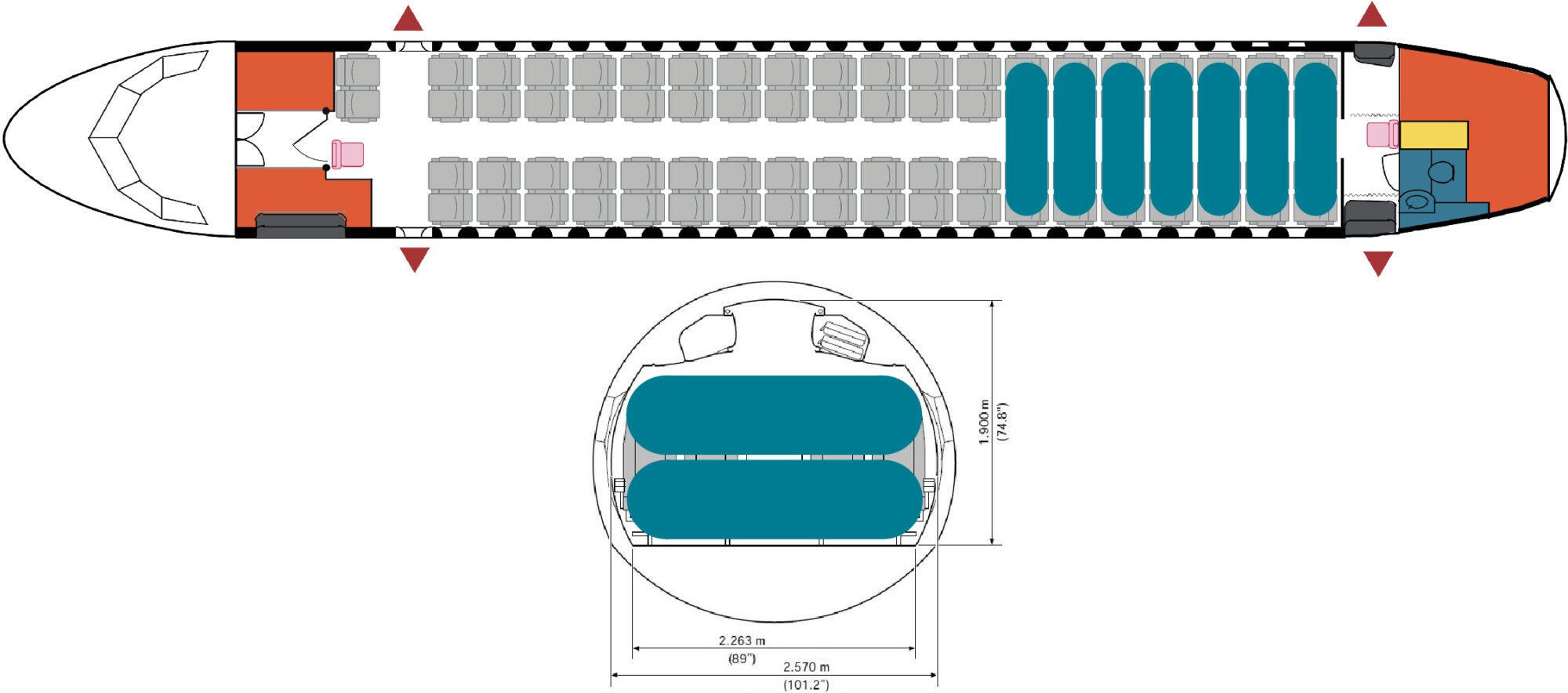White paper
Performance Analysis of Fuel Cell Retrofit Aircraft
Powering aircraft with hydrogen fuel cells is a promising potential zero-emission solution for aviation. Retrofitting existing aircraft with hydrogen fuel cell propulsion could mean zero-emission flying without having to develop new aircraft. While fuel cells cannot yet produce enough power to propel narrowbody aircraft, they can power regional turboprop aircraft. And while fuel cell retrofit aircraft also cannot match the payload and range capabilities of fossil-fueled aircraft, they are more energy efficient. This analysis models a retrofit ATR 72 turboprop aircraft with fuel cell propulsion and hydrogen storage and considers both liquid hydrogen (LH2) and compressed gaseous hydrogen (GH2) fueling options.
This study uses flights of 400 km and 700 km – about the distance from New York City to Washington, D.C. – to simulate the real-world use of ATR 72s. On such flights, one fuel cell aircraft would have lower energy and carbon intensities, be marginally more expensive to fuel, and could reduce GHG emissions by 2,500 tonnes per year.
This study also includes a fuels analysis to quantify the carbon intensity and cost of fueling a retrofit aircraft with GH2 and LH2 compared to regular jet fuel (Jet A) and e-kerosene. A fuel cell aircraft, fueled by green liquid hydrogen, can reduce carbon intensity by 88% compared to Jet A and by 35% compared to e-kerosene. While green hydrogen will likely be more expensive than jet fuel in most cases, the increased efficiency of the fuel cell propulsion system would bring the price premium down to 29–40% in the United States in 2030 and would make fueling with green hydrogen cheaper than fossil jet fuel in the United States in 2050. In the European Union, where hydrogen is expected to be more expensive to produce, the price premium for using green hydrogen would be around 100% in 2030, dropping to 50% in 2050.

Figure. Carbon intensity of different fueling options.
Six key findings emerge from this study:
- Retrofitting an ATR 72 with hydrogen fuel cell propulsion would result in a more energy efficient aircraft.
- Using green hydrogen to power a retrofit fuel cell aircraft would result in nearly a 90% reduction in GHG emissions.
- The increased efficiency of a fuel cell propulsion system would narrow the price premium of using green hydrogen.
- Fueling with LH2 would increase the range of a fuel cell aircraft.
- Fuel cell retrofit aircraft could have the payload and range capability to service 15%–20% of the turboprop market.
- Increasing the efficiency of a fuel cell would be the most effective way to improve aircraft performance.
In summary, this study finds that a fossil-fueled turboprop aircraft retrofitted with hydrogen storage and fuel cell propulsion is more energy efficient and less carbon intensive, but more expensive to fuel. It would have lower payload and range capabilities but would reduce GHG emissions by 88% relative to the original aircraft.

Figure. Illustrative tank layout of a retrofitted ATR 72 for 50 passengers.
